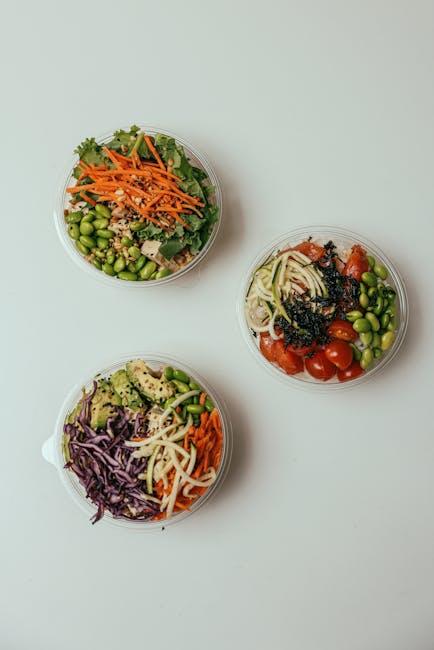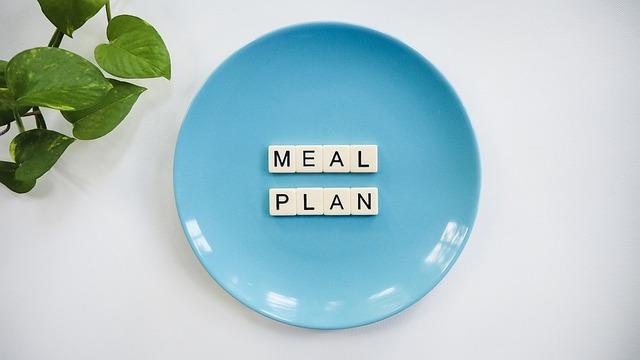Creating a meal plan that effectively supports your slimming goals can often feel like navigating a maze of conflicting advice and diet trends. However, the key to success lies not in adopting the latest fad, but in crafting a personalized strategy that aligns with your unique lifestyle, nutritional needs, and long-term health objectives. In this article, we delve into the analytical process of designing a slimming meal plan that not only facilitates weight loss but also enhances overall well-being. With a confident approach, we will explore the essential components of a balanced diet, the importance of mindful eating, and the role of sustainable habits in achieving lasting results. By understanding the science behind nutrition and embracing a tailored approach, you can create a meal plan that is both effective and adaptable to your evolving needs.
Understanding Your Nutritional Needs and Goals
To craft a meal plan that truly supports your slimming journey, it’s crucial to first comprehend your unique nutritional needs and objectives. Begin by evaluating your daily caloric requirements, which can vary based on factors such as age, gender, weight, activity level, and metabolic health. Once you have a clear picture of your caloric baseline, you can strategically create a caloric deficit that encourages weight loss while still providing sufficient energy for daily activities.
Next, consider the macronutrient composition of your meals. Striking the right balance between proteins, carbohydrates, and fats is essential for maintaining muscle mass, managing hunger, and optimizing metabolic function. Here are a few guidelines to consider:
- Protein: Aim for lean sources such as chicken, fish, tofu, or legumes to help with muscle maintenance and satiety.
- Carbohydrates: Focus on complex carbs like whole grains, fruits, and vegetables that provide sustained energy and essential nutrients.
- Fats: Incorporate healthy fats from sources like avocados, nuts, and olive oil to support brain function and hormone regulation.
By aligning your meal plan with your specific nutritional needs and weight loss goals, you create a sustainable path towards achieving your desired results, all while nourishing your body effectively.

Crafting Balanced Meals with Essential Macronutrients
Achieving a balanced meal that aids in slimming starts with understanding the role of macronutrients: proteins, carbohydrates, and fats. Each plays a unique part in your diet, and ensuring the right proportions can optimize your metabolism and energy levels. Start by focusing on lean proteins like chicken, fish, or plant-based options such as tofu and legumes. These proteins not only support muscle growth but also keep you feeling full longer.
Incorporate complex carbohydrates such as whole grains, sweet potatoes, and quinoa, which provide sustained energy and are rich in fiber, aiding digestion. Don’t shy away from healthy fats found in avocados, nuts, and olive oil, as they are essential for hormone regulation and nutrient absorption. To craft a meal plan, consider the following:
- Proportion: Aim for a plate divided into half vegetables, a quarter protein, and a quarter carbohydrates.
- Variety: Rotate between different protein sources and types of vegetables to keep meals exciting and nutritionally diverse.
- Portion Control: Use smaller plates to naturally reduce portion sizes, focusing on quality over quantity.
By consciously selecting and balancing these macronutrients, you create meals that not only support your slimming goals but also enhance overall health and vitality.

Incorporating Variety and Flexibility in Your Meal Plan
To ensure your meal plan is both effective and sustainable, it’s crucial to embrace a balance of variety and flexibility. Variety is not just about keeping meals interesting; it plays a significant role in providing a wide range of nutrients essential for your body. Consider incorporating different food groups and experimenting with various cuisines. This could mean trying a new vegetable each week, exploring alternative protein sources like legumes or tofu, or experimenting with whole grains such as quinoa or farro. Such diversity not only prevents meal fatigue but also supports a more balanced intake of vitamins and minerals.
- Protein Options: Chicken, fish, beans, lentils, tofu, and eggs.
- Carbohydrates: Sweet potatoes, brown rice, quinoa, and oats.
- Fats: Avocado, nuts, seeds, and olive oil.
- Vegetables: Spinach, broccoli, bell peppers, and kale.
Flexibility in your meal plan allows you to adapt to life’s unpredictabilities without derailing your progress. It’s about having the freedom to swap meals, adjust portion sizes, or indulge occasionally without guilt. For instance, if a dinner out with friends arises, you can modify your plan by having a lighter lunch or incorporating an extra workout. By allowing yourself this adaptability, you’re more likely to stick with your meal plan long-term, making it a sustainable part of your lifestyle rather than a temporary fix.

Monitoring Progress and Adjusting Your Strategy
As you embark on your journey towards a healthier lifestyle, it’s crucial to keep an eye on your progress and be ready to tweak your meal plan as needed. Start by setting measurable goals and track your progress regularly. Use a journal or a mobile app to record your meals, physical activities, and any changes in your weight or measurements. Pay attention to how your body responds to different foods and note any patterns that emerge.
- Assess Nutritional Balance: Ensure your meals are providing the right mix of nutrients. If you notice fatigue or hunger, consider adjusting your macronutrient ratios.
- Evaluate Portion Sizes: If you’re not seeing the desired results, review your portion sizes. You might need to reduce them or, conversely, increase them if you feel overly restricted.
- Adjust Meal Frequency: Experiment with how often you eat. Some find success with three meals a day, while others prefer smaller, more frequent meals.
Regularly revisiting and adjusting your strategy not only helps in staying on track but also prevents stagnation. Keep in mind that what works today might need refinement tomorrow, and that’s perfectly normal. With a proactive approach, you can tailor your meal plan to better suit your evolving needs and continue progressing toward your goals.
